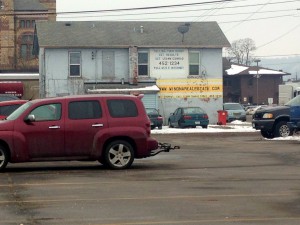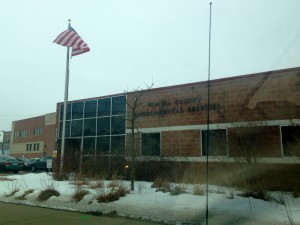With construction well on its way on the interstate 90 bridges, The Minnesota Department of Transportation is taking on an unexpected construction project. “Bat Condos” or bat hibernacula, have been installed alongside the Mississippi river due to the significant number of bats living under the interstate 90 bridge that is due to come down next year.
Heather Kaarakka, a conservation biologist with the Wisconsin Department of Natural Resources, said the bats have lived under the bridge for years and are used to the noise from cars.
Kaarakka estimated that roughly 2-3 thousand Little Brown Bats were living under the bridge.
“When we first discovered the colony, we found them roosting in the expansion joint between the east and the west bound lanes of the bridge.” Kaarakka said.
Although the bats in the colony are acclimated to some level of noise, construction will likely disturb them, Kaarakka said, and potentially cause them to leave the area completely.
Since construction started, The Department of Transportation from Minnesota and Wisconsin as well as the DNR’s from both states, have worked closely to help mitigate the loss of the bats’ habitat.
“Building and installing the bat condo and bat houses will help keep the colony around by providing alternate habitat.” Kaarakka said. Installing the bat houses before the roost is removed, will allow bats to find a new habitat and stay in the area.
MDOT has been the lead on the bridge project and have been more than willing to provide alternate habitat for the bats and take steps to help the bats move out of the bridge, Kaarakka said.
Robin Richardson, a biology professor at Winona State University, said she has seen success in bat condos located in the Winona community. In 2010, Richardson and some of her students put up a bat condo behind the Tau Center on WSU’s west campus.
According to Richardson, it could take years to see whether bats are using the bat condos near the bridge but says the bat condos near the Tau Center appear to be active.
“There are a lot of signs that they are using it. A lot of guano. It took about a year to see whether the bats where using it or not.” Richardson said.
Richardson advised community members who want to build a bat condo that bat condos should be located near water and should be in a warm location.
“The counterintuitive thing about bats is that they like it hot. People try to put them in a shady place but they like their houses 100 degrees and they need to be by water so they can fly into the house from the water.” Richardson said.
She also said that bat condos should be placed where other animals, such as squirrels, can not bother their habitat.
Kaarakka explained why Winona residents should want bats to remain in the area.
“A single bat can consume up to 1,000 mosquito-sized insects in one hour and a pregnant bat can eat her weight in insects each night.” Kaarakka explained.
Because bats can eat so much, it makes them important pest control not only for human pests but also agricultural pests.
Bats have become increasingly important in the southern Minnesota ecosystem since White-nose syndrome (WNS), a fungal bat disease was discovered in 2007. According to Kaarakka, it is not uncommon to see 90-100% of the bats infected with this disease die. WNS has a high mortality rate and it is not specific to one species, so multiple hibernating bat species are at risk in Wisconsin and Minnesota.
“If WNS continues on its present course, Wisconsin and Minnesota could soon see empty evening skies as bats disappear from the disease. “ Kaarakka said.
Building a bat condo is something anyone can do, Kaarakka said, and directions and instructions can be found on the Wisconsin Bat Program website.







